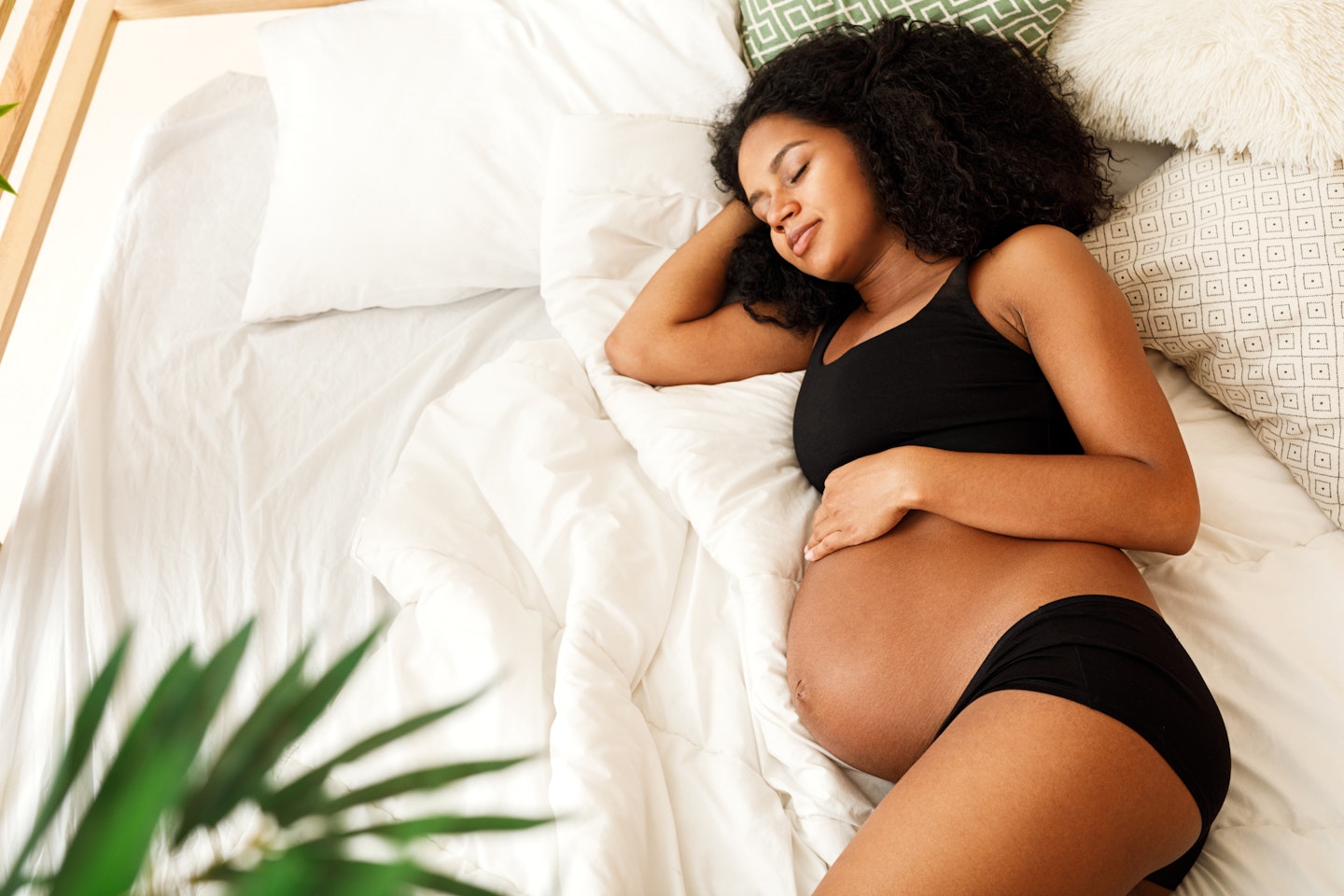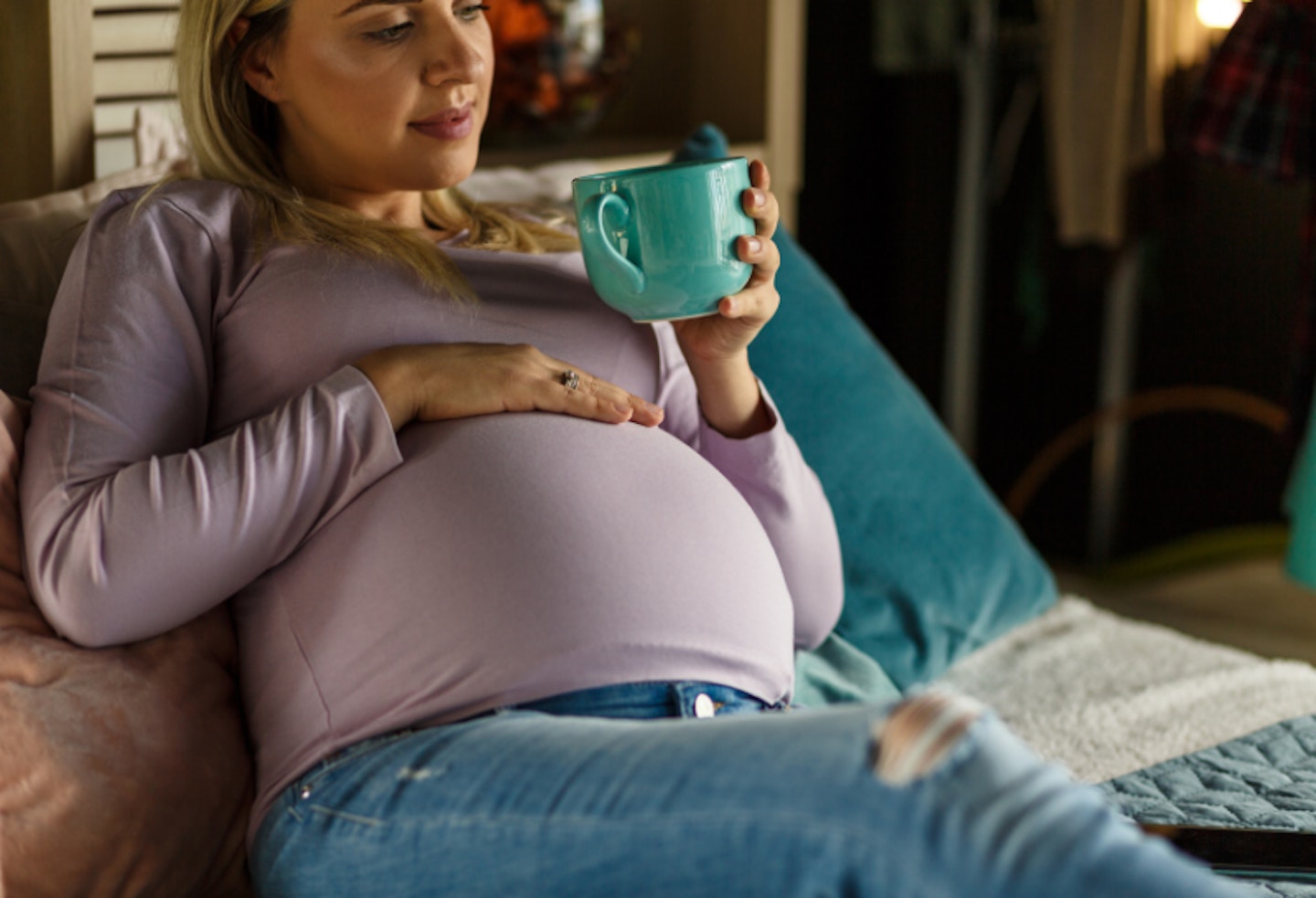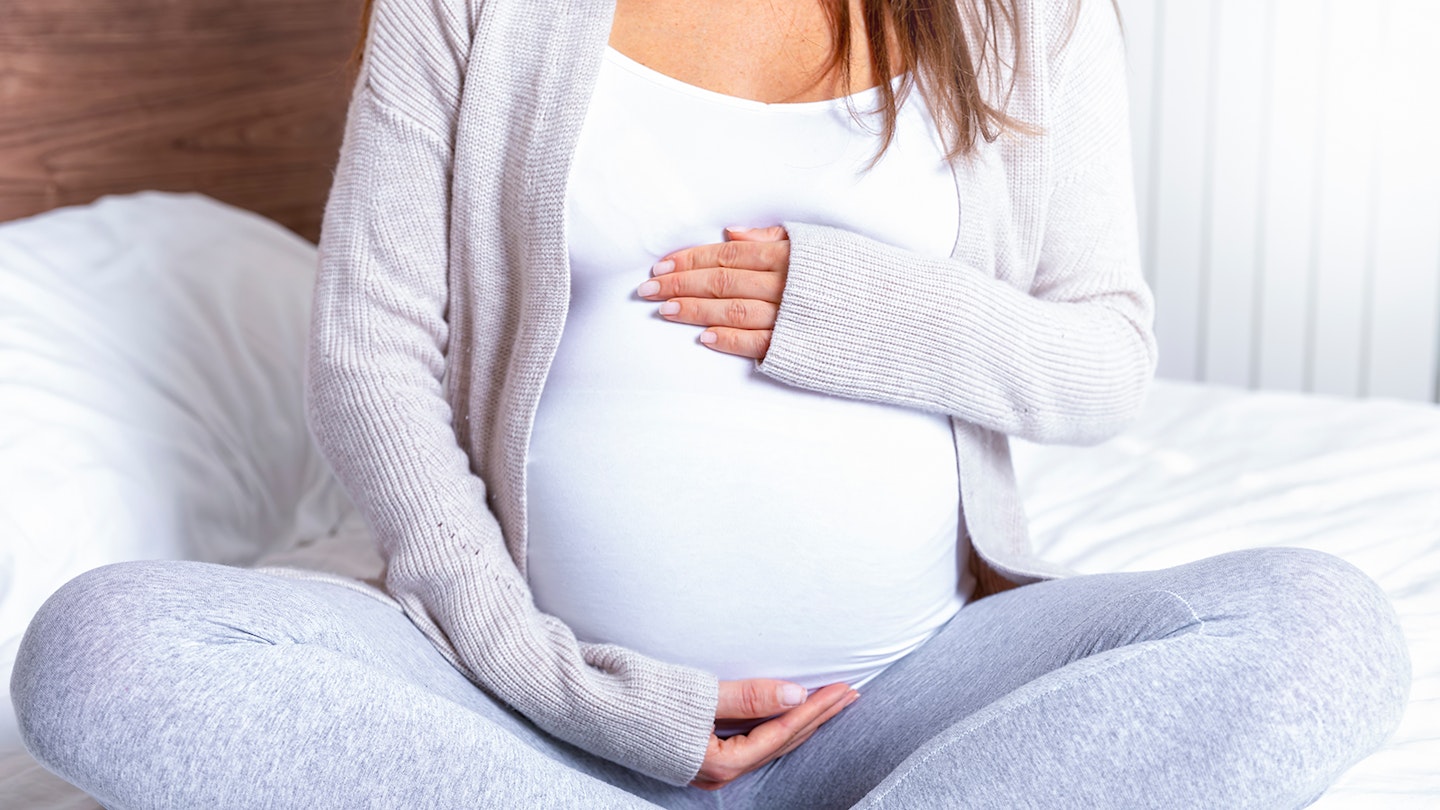If you’re wondering how your baby going to get out of there, it’s time to help your body prepare for the experience with perineal massages.
It’s no spa treatment, but perineal massage in pregnancy can really help you when it comes to giving birth and also helps avoid complications and tears.
You’ve probably heard a whole load of conflicting thoughts on the topic of perineal massages – it isn’t for everyone – and involves “kneeding” the delicate area between your vagina and anus which isn’t exactly going to land in your list of top 10 things to do.
However, just like with any pre-birth preparation, there is a good reason why medical experts advise that perineal massages are a good idea in the latter stage of labour.

What is my perineum?
Don’t worry if you have no idea where your perineum is – it’s one of those areas of your body that you are unlikely to introduce yourself to until you’re pregnant.
‘Your perineum area is made up of soft, fleshy tissues,’ explains Annabel Hargrave, Yogabirth teacher. ‘These tissues surround the vaginal opening and the area between the vagina and rectum.’
Preparing your perineum for childbirth
You should start to massage the area during thelast four to six weeks of pregnancy. It will help stretch you and lessen the chance of tearing during birth. Getting used to these sensations of pressure and stretching will help you relax when you’re in labour to hopefully avoid you having to get stitches.
‘It can reduce trauma to the perineum in the second stage of labour and reduce the risk of tearing or an episiotomy,’ explains Annabel. Massaging the perineum also gets you in touch with the area where the baby will come out.
How to massage your perineum
Before you start, make sure you’ve gone to the loo so your bladder is empty. If you fancy, it can help to have a warm bath to relax yourself and the perineal area.
‘First of all, wash your hands well,’ says Annabel. ‘Have a plain organic perineum massage oil on hand, to help you out.’
Expert midwife and founder of Natural Birthing CompanyJane Mason explains how to give yourself a perineal massage.
-
Place 1-2 drops of massage oil onto your fingers and apply to the outside of the perineum.
-
Place your clean thumbs about 2 inches (5cm) into your vagina. Using your thumbs press downwards in the direction of your anus so that you can feel the stretch of the muscles surrounding the vagina and the vaginal tissues.
-
Once you have this downward pressure, use your thumbs to sweep from side to side in a rhythmic “U” shape/hammock movement.
-
Whilst massaging the perineum from the outside with your other fingers, apply steady pressure towards the anus. This may tingle but should not hurt! This will also help you to recognize the sensation when your baby is ready to be born.
-
Apply more oil to the outside of the perineum if required. The perineum will possibly feel tight when you first start, but in time you will begin to feel a change and remember this should not hurt.
-
If your partner is performing the massage, just follow the same instructions, but ask them to use their index fingers using the same “U” shape/hammock motion. It is important that you tell your partner how much pressure to apply.
-
Do not undertake perineal massage if you are suffering from Herpes, Vaginal thrush or other known infections. Please contact your midwife or GP if you suspect any of these infections.
Let your partner massage your perineum
If you don’t mind, it can be easier for your partner to massage the area for you – but he will need to go places he (perhaps) hasn’t been before.
‘After washing his hands, he should massage some lubricant into the area and insert either thumbs or index fingers shallowly into your vagina while gently pressing down and to the sides,’ says Annabel. ‘The massage action can be done from side to side.’
Whether you or your partner is doing the massage, avoid the urethral area because of a potential infection.
How does perineal massage help?
The first few times you do the massage it will feel tight but – just like with any form or stretching – you should start to notice an increase in flexibility after about a week.
‘As the perineum becomes more elastic more fingers can be inserted,’ advises Annabel.
Try practising your relaxation and breathing techniques at the same time to help your labour go as smoothly – and painlessly – as possible.

Your perineum after giving birth
Even after a straight forward vaginal birth, you may find your perineum feels sore which is completely normal and expected after pushing a baby out! You may also have experienced a long birth, a big baby, the use of forceps, tearing and episiotomy, all factors which require some extra TLC for your perineum.
What is a peri bottle and how can it help after giving birth?
Perineal pain and recovery tips
Follows these tips from the NHS to help look after your perineum.
-
Avoid standing or sitting for long periods.
-
Wear breathable materials, like cotton and disposable briefs, and avoid tight clothing.
-
Drink plenty of water (aim for at least eight glasses a day) to dilute your urine.
-
Begin doing your pelvic floor exercises as soon as you can after birth this will increase the blood supply and help with healing.
-
Ensure you are comfortable when sitting to feed your baby. Consider investing in a nursing pillow.
-
You can use cold/ice packs but you should not apply these directly onto your skin. Always wrap in a cloth/flannel and apply for 30 minutes every so often throughout the first few days.
-
When you've been to the toilet, pat/wipe the area dry with toilet paper rather than rubbing.
If for any reason you find the pain persists or you develop a temperature or feel unwell, contact your midwife or GP immediately.

